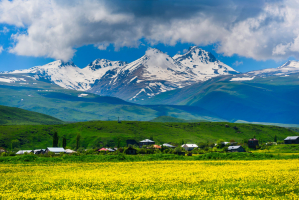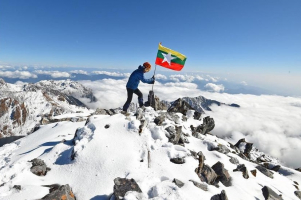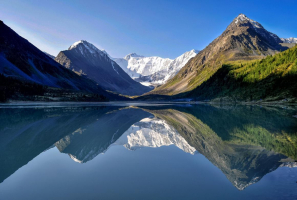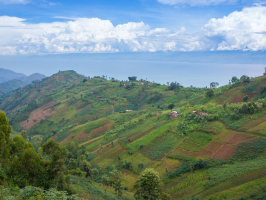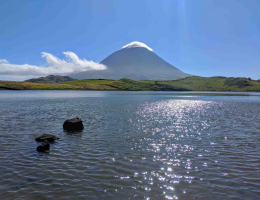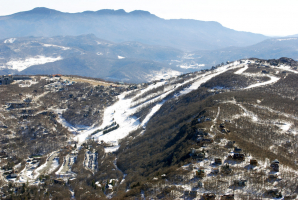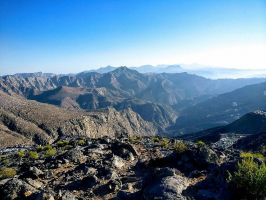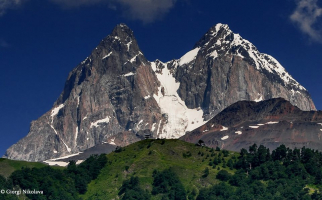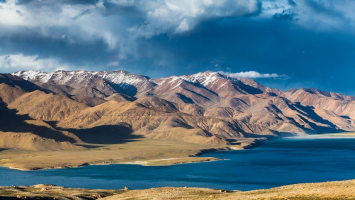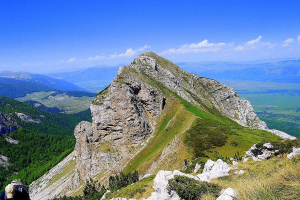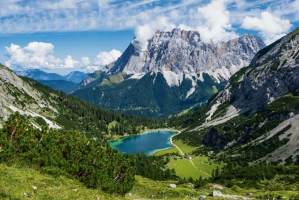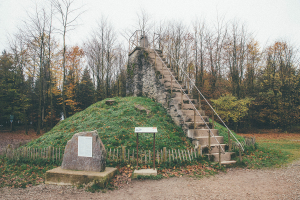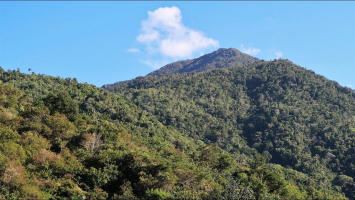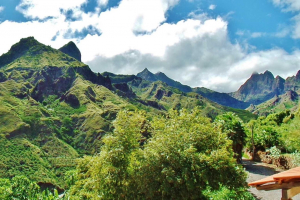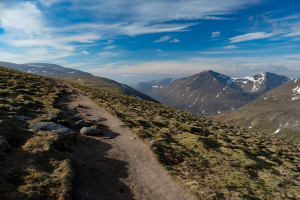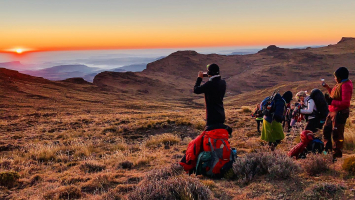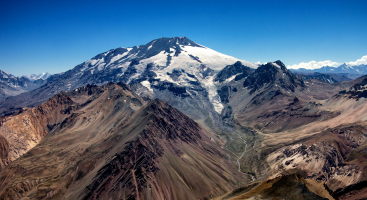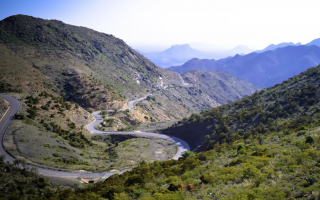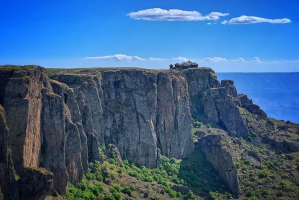Top 11 Highest Mountains In Peru
Peru has some of the most beautiful mountains on the planet. The Andes have a magnetic quality to them as they split the sky. These peaks, from Huascarán to ... read more...Salkantay, are sure to steal your breath away (literally). These territories have been revered and worshipped for thousands of years, and they continue to do so now. The 11 most noteworthy mountains are listed here, ranked by height.
-
Huascarán holds the status of being the country's highest peak. With a height of 22,132 feet (6,746 meters), it is the southernmost summit of the Cordillera Blanca mountain range. Nevado Huascarán's highest summit, at 6,746 meters above sea level, is Peru's highest point. Huascarán Norte, the second highest peak in the range, stands at 6,655 meters. Huascarán is located in the western Andes' Cordillera Blanca range, in the Ancash department. The mountain is part of Huascarán National Park, a UNESCO World Heritage Site that is home to amazing wildlife like cougars, jaguars, and Peruvian tapirs. The area has been a favorite climbing and trekking destination since it was first ascended in 1932. The peak may be reached via Huaraz before continuing on to Musho, a tiny settlement.
Huascarán was originally climbed in 1932 by a German-Austrian expedition, and it continues to draw mountain climbers from all over the world. Most arrive at Huaraz before traveling on to Musho to begin the five- to seven-day ascent.Location: Huascarán National Park
Elevation: 6,746 m
Range: the Cordillera Blanca mountain
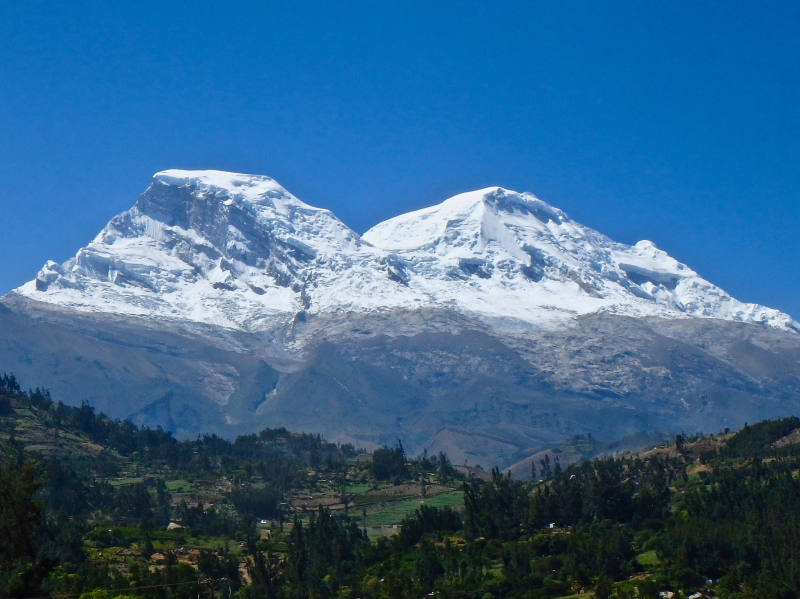
Photo source: Wikipedia 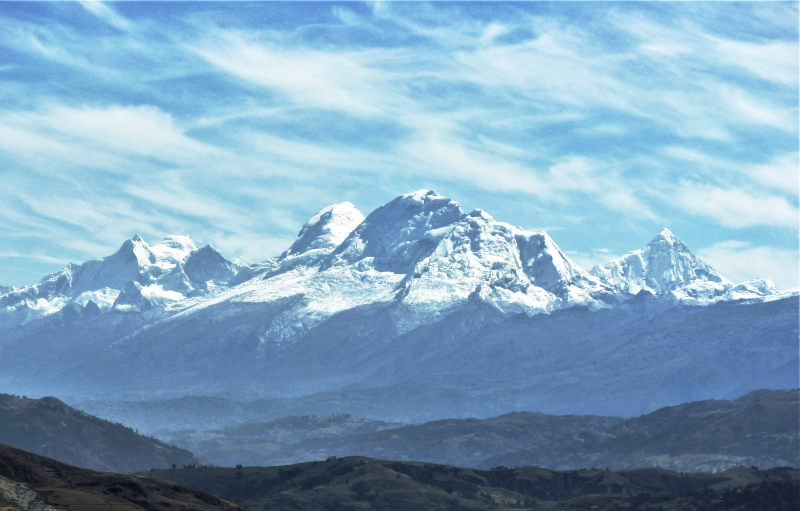
Photo source: Wikimedia Commons -
At 21,709 feet, Nevado Yerupajá stands in second place (6,617 m). It is located in the same department (Ancash) as Huascarán, although it is part of the Cordillera Huayhuash. Yerupajá is not for the faint of heart. Even the most experienced mountaineers will find it challenging to climb due to its trademark knife-edge summit ridge. It is "one of the hardest high peaks to climb in the Andes," according to www.andes.org.uk, with only a handful successful ascents since the mid 1980s. Locals call it El Carnicero ("The Butcher") because of its blade look and difficult ascent.
Climbers usually arrive in Yerupajá via Huaraz, then Chiquian or Jahuacocha. Jim Maxwell and Dave Harrah, two American climbers, achieved the first successful ascent of Yerupajá in 1950.
Location: the Cordillera Huayhuash
Elevation: 6,617 m
Range: the Andes
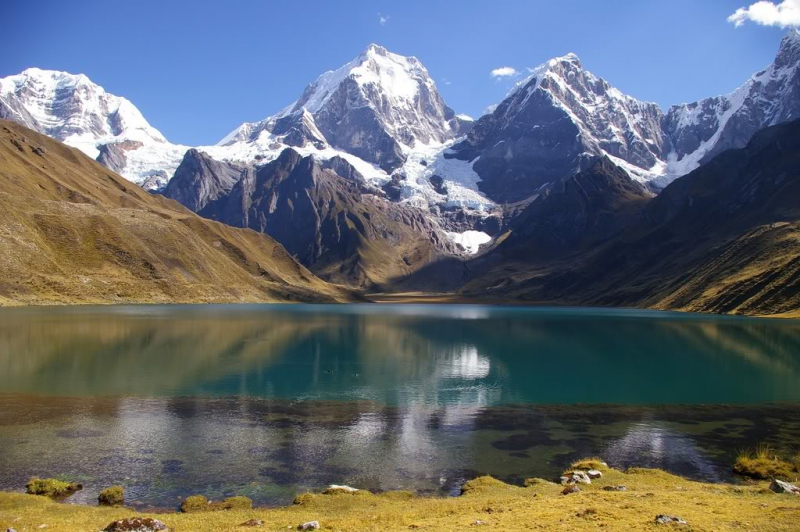
Photo source: Thousand Wonders 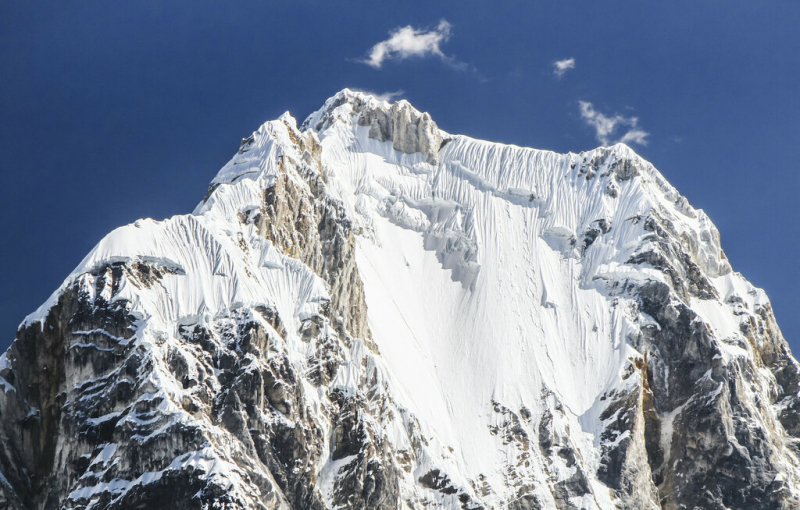
Photo source: PeakVisor -
The highest volcano in Peru, Nevado Coropuna, is located about 90 miles outside of Arequipa. This volcano rises to a height of 21,079 feet (6,425 meters), ranking third among the country's highest peaks. The highest volcano in Peru is Nevado Coropuna. It is part of the broader Cordillera Occidental, and is located within the Cordillera Ampato. The Coropuna massif is made up of ten cone-shaped peaks. The peak is usually climbed from Arequipa, some 155 kilometers (95 miles) to the southeast, and then from Chuquibamba, a tiny settlement.
This volcano was adored by the Incas and is claimed to house one of the most sacred apus, mountain spirits. On the base and slope of this stunning summit, ancient temples and Inca routes can still be seen. For the Incas, Coropuna was an important mountain spirit, or apu. The remnants of Inca temples and old Inca roads may still be found on the mountain's foothills and slopes, indicating that Inca climbers reached the top long before contemporary mountaineers (including Hiram Bingham and his Yale expedition, who were the first to scale Coropuna's highest peak in 1911).
Location: the Andes mountains of southeast-central Peru
Elevation: 6,425 m
Range: Cordillera Occidental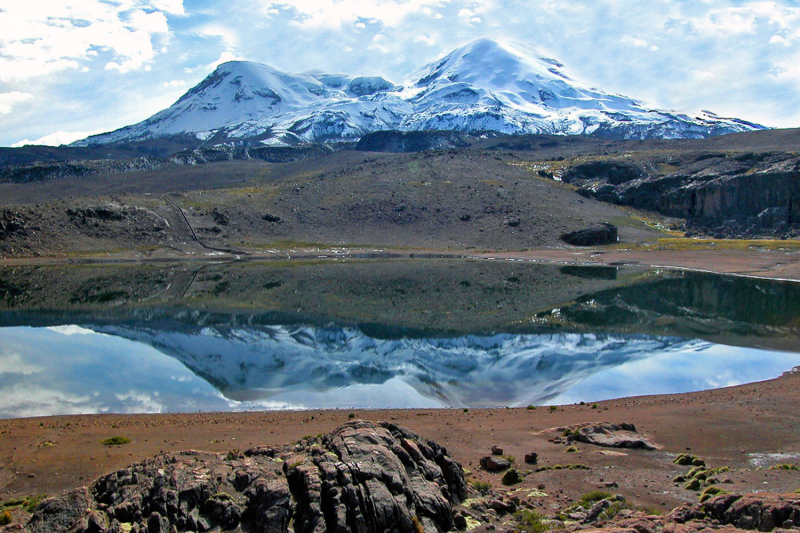
Photo source: Wikipedia 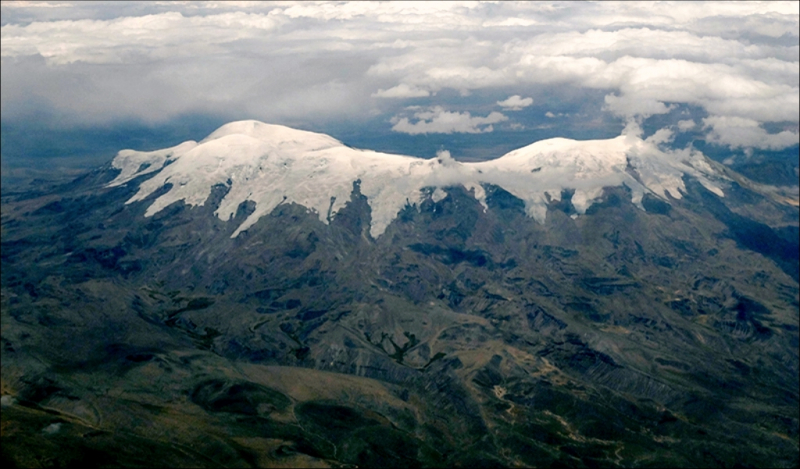
Photo source: Volcano Hotspot -
After Huascarán, which is roughly 11 kilometers south of Huandoy, Nevado Huandoy is the Cordillera Blanca's second highest mountain. Huandoy, also known as Tullparaju, is a mountain in Ancash, Peru, that is part of the Huascarán National Park. The mountain features four unique peaks, three of which are over 6,000 feet in elevation. This mountain's tallest summit is 20,981 feet above sea level (6,395 m). Huaraz, Peru's gateway to the Andes and seat of the Ancash department, is once again the best method to go to this peak.
Huandoy is part of Huascarán National Park, which is home to many of the Cordillera Blanca's greatest peaks. The majority of climbers arrive at Huaraz before beginning the perilous icefall ascent of Huandoy.
Location: Huascarán National Park
Elevation: 6,395 m
Range: Cordillera Occidental
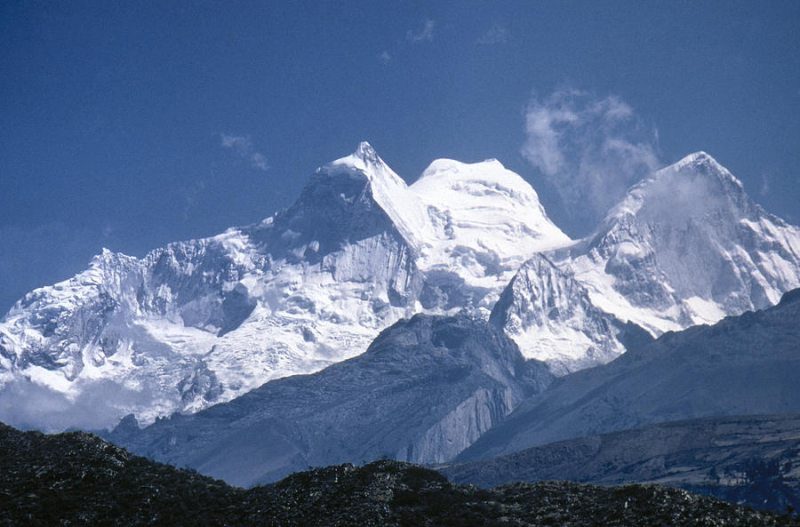
Photo source: Wikipedia 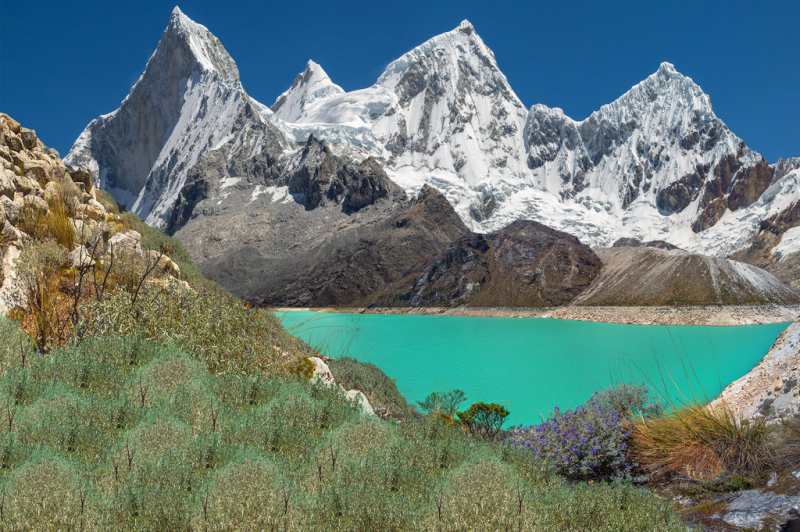
Photo source: PeakVisor -
Huantsan, at 20,981 feet (6,395 meters), is tied with Huandoy. The top resembles an arrowhead and is a formidable challenge to those brave enough to attempt it. The journey from Huaraz to Huantsan is simple, but the ascent is risky and strenuous. Huantsan is known for being a dangerous and difficult peak to climb. As a result, Huantsan receives fewer ascent attempts than practically any other 6,000-meter summit in the Cordillera Blanca. Huantsan and Santa Cruz are the most technically difficult of the 12 mountains included in this article. As a result, Huantsan is reserved for experienced climbers.
Huantsan is located about 25 kilometers east of Huaraz, the seat of the Ancash Region and the entrance to the Cordillera Blanca and Huascarán National Park for climbers and hikers.
Location: the Andes of Peru
Elevation: 6,395 m
Range: Cordillera Blanca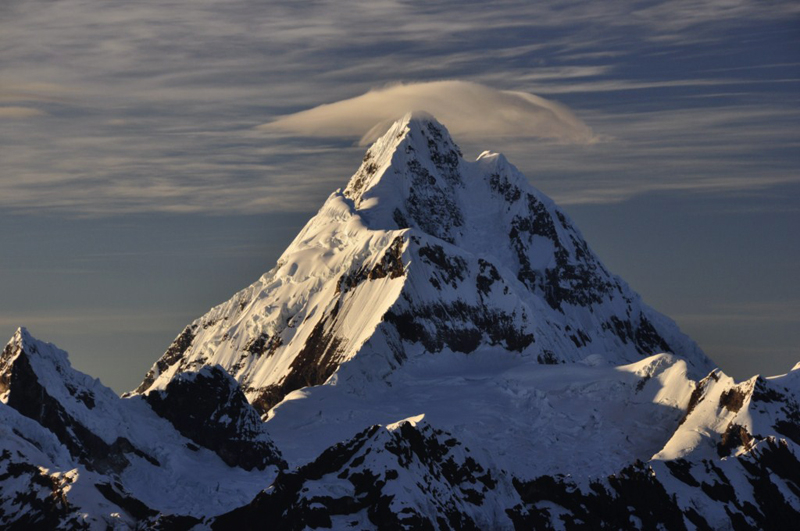
Photo source: Nelson Dellis 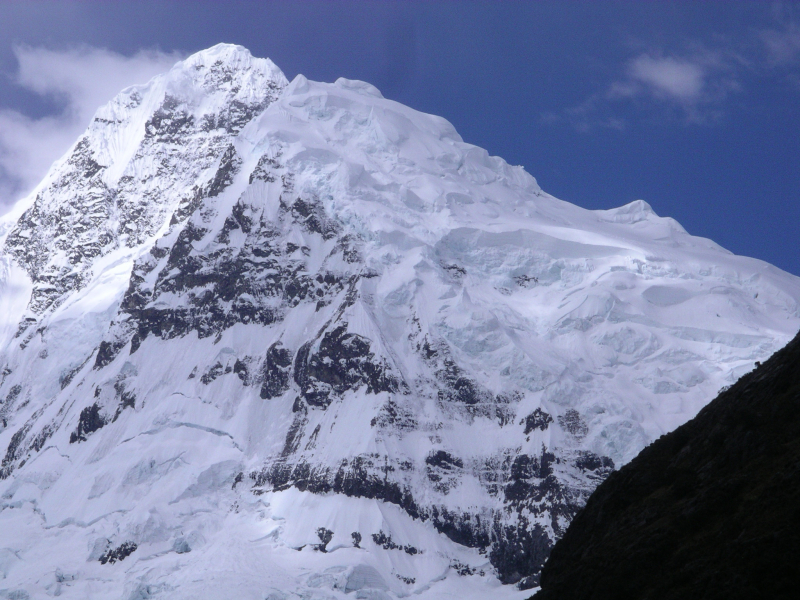
Photo source: Wikimedia Commons -
The Nevado Ausangate is the highest peak in the Cordillera Vilcanota range in southern Peru, as well as the most prominent mountain in the Cusco Region. It is located 85 kilometers east-southeast of Cusco. Located in southern Peru, 60 miles south of Cusco, the Inca capital. Ausangate, like Coropuna, is considered one of the most powerful apus (mountain gods) in Inca mythology. Ausangate's importance as an apu in Inca mythology is understandable given its proximity to the Inca Empire's ancient capital. It retains its revered standing among the local populace, which is manifested most vehemently during the yearly Quyllur Rit'i celebration.
The majority of climbers arrive in Cusco before attempting Ausangate from Tinqui or Chilca. The multi-day Ausangate Trek is famous with climbers and hikers who want to see the country's enormous mountains. The hike usually begins in Cusco and ends in Tinqui, Chilca, or Pacchanta.
Location: southern Peru
Elevation: 6,384 m
Range: Cordillera Vilcanota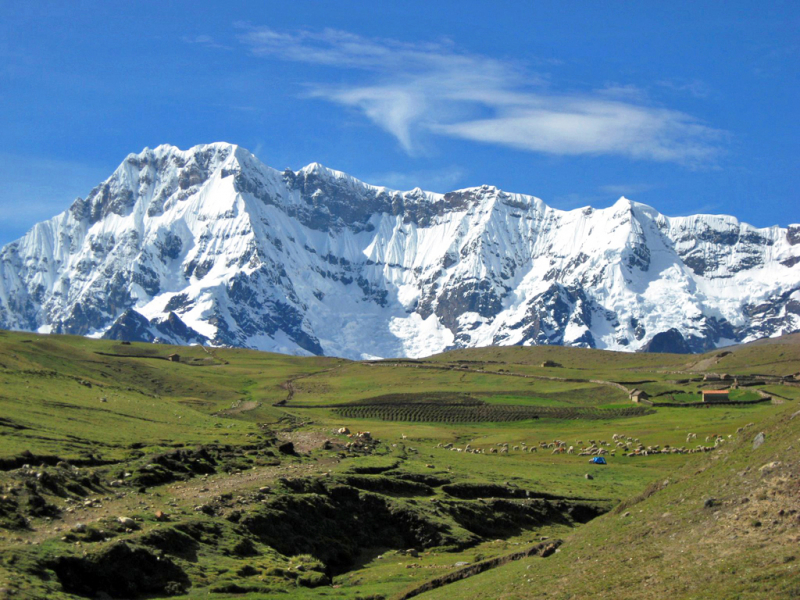
Photo source: Wikipedia 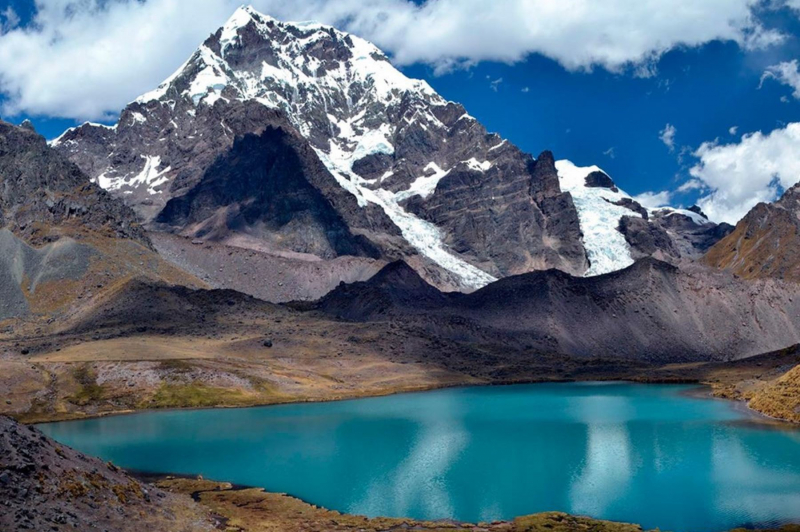
Photo source: Peru Cultural Connection -
Chopicalqui is a Peruvian peak in the Cordillera Blanca region of the Andes. It is located in the Yungay Province of Ancash, between the Huascarán and Contrahierbas mountains. Chopicalqui is one of the more accessible 6,000-meter summits in the Cordillera Blanca, and is easier to climb than adjacent peaks such as Huascarán, Huandoy, and Huantsan. As a result, it is a popular peak for inexperienced climbers, making it one among the most popular – and occasionally crowded – ascents.
People usually start in Huaraz and go to Yungay to reach Chopicaliqui's base camp, as they do with most of these climbs. Climbers travel to Yungay, about 45 kilometers north of Huaraz, before entering Huascarán National Park and setting up base camps for Chopicalqui and Huascarán.
Location: Yungay Province of Ancash
Elevation: 6,345 m
Range: Cordillera Blanca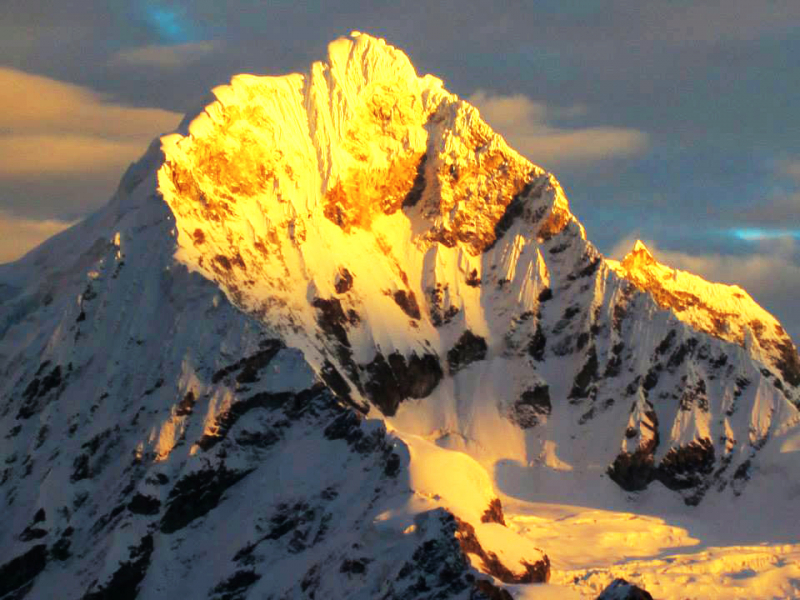
Photo source: Wikipedia 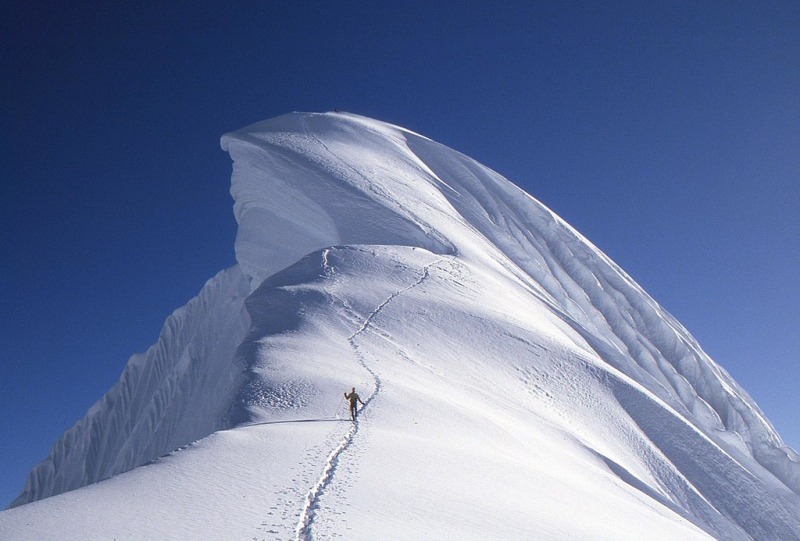
Photo source: Wikipedia -
Joe Simpson's novel, 'Touching the Void,' made Siula Grande famous, and it was later converted into a film. In the Peruvian Andes, Siula Grande is a mountain in the Huayhuash mountain range. It reaches a height of 6,344 meters (20,814 feet) and has a subpeak, Siula Chico, at 6,260 meters (20,540 feet). Joe Simpson and Simon Yates, two English mountaineers, set out in 1985 to climb the West Face of Siula Grande, which had hitherto been unclimbed. Simpson stumbled and shattered his leg as he descended an ice cliff. Despite being separated from Yates, Simpson managed to drag himself all the way back to base camp in one of the most incredible acts of mountain survival ever. Joe Simpson and Simon Yates were the first to scale the west face of this monster, and their remarkable trip was chronicled in the book Touching the Void, which was adapted into a film.
Siula Chico, a subpeak of Siula Grande, rises to around 6,260 meters. A lengthy mountain pass connects the two peaks. After the adjacent Yerupajá, Siula Grande is the second highest mountain in the Cordillera Huayhuash.
Location: the Peruvian Andes
Elevation: 6,260 m
Range: Huayhuash mountain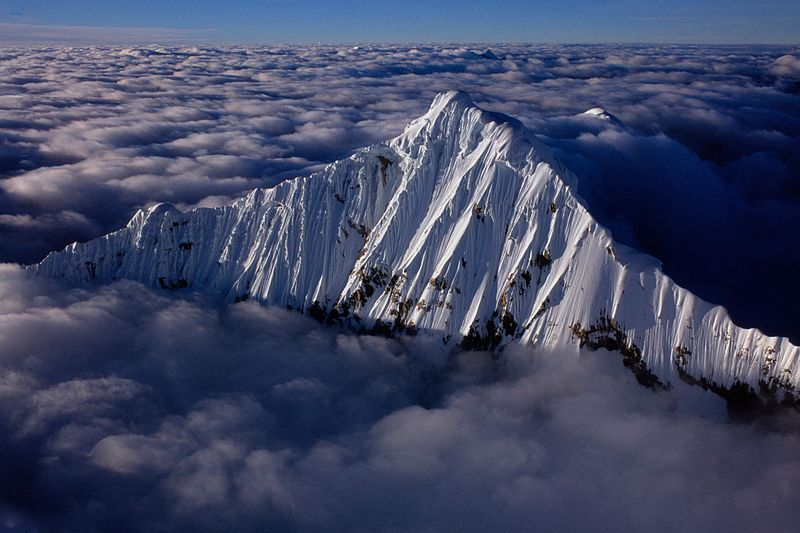
Photo source: Everestian 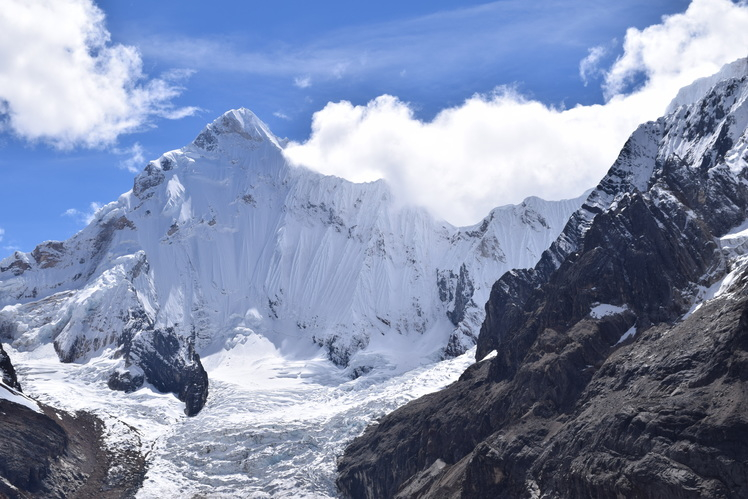
Photo source: Mountain Forecast -
The tallest mountain in the Cordillera Blanca's Chinchey massif, Nevado Chinchey, is located about 28 kilometers northeast of Huaraz. With a height of 20,698 feet, Chinchey is slightly taller than Palcaraju. Chinchey and Palcaraju, like many of the other impressive peaks on this list, are accessible via Huaraz. Mountaineers prefer the adjacent Palcaraju, a three-peaked mountain about 5 kilometers from Chinchey, to Chinchey, which is rarely climbed (both mountains are labeled on the image above). Palcaraju is around 6,200 meters above sea level.
Ben Horne and Gil Weiss, two American climbers, died in 2012 while attempting to climb Palcaraju Oeste's south face. A days-long search yielded their bodies.
Location: 28 kilometers northeast of Huaraz
Elevation: 6,309 m and 6,274 m
Range: Cordillera Blanca
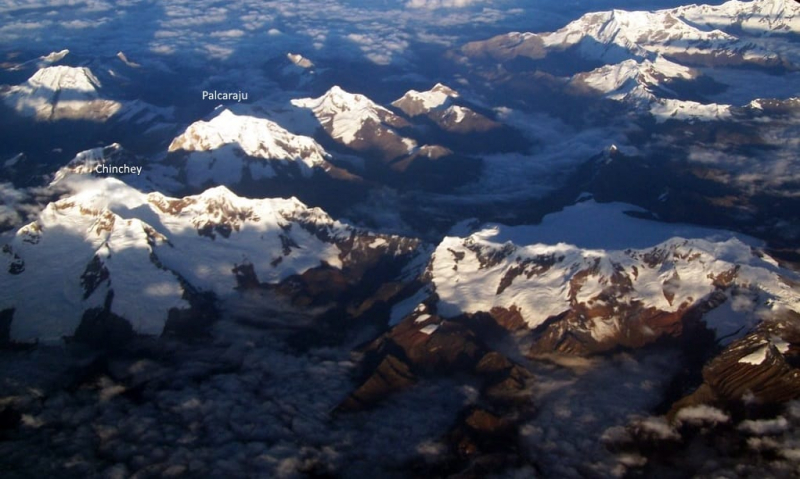
Photo source: How to Peru 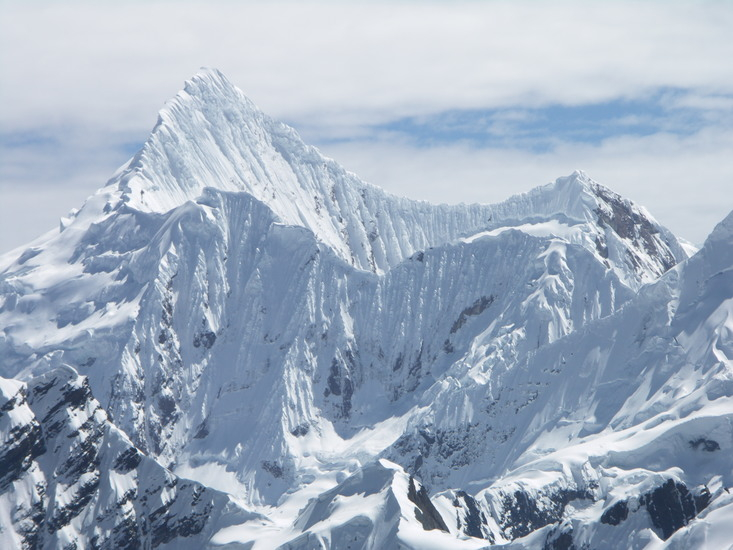
Photo source: Mountain Forecast -
The Cordillera Ampato rises to a height of 20,630 feet (6,288 meters). This inactive stratovolcano rises to a height of 20,630 feet, making it one of the highest mountains in the south of Peru (6,288 m). Ampato is around 60 miles outside of Arequipa, Peru's second most populated city. Because of a 1995 expedition led by Dr. Johan Reinhard, who discovered the frozen and mummified bones of an Inca girl at the summit, Ampato has become a legendary peak. The mummified remains were discovered to be those of an Inca girl who had been sacrificed to the Inca gods. Juanita, popularly known as the Inca Ice Maiden, was discovered in an exceptionally well-preserved state and is presently kept in Arequipa's Museo Santuarios Andinos. It shows that children were sacrificed to honor the apus (mountain gods). The Museo Santuarios Andinos, a must-see in Arequipa, houses her well-preserved remains.
Ampato is a dormant stratovolcano located 74 kilometers northwest of Arequipa in the Cordillera Occidental. Just to the northeast of Ampato is the active stratovolcano Sabancaya, which is roughly 6,000 meters high. Ampato, Sabancaya, and Hualka Hualka are shown in the image above, from left to right.Location: the south of Peru
Elevation: 6,288 m
Range: Cordillera Occidental
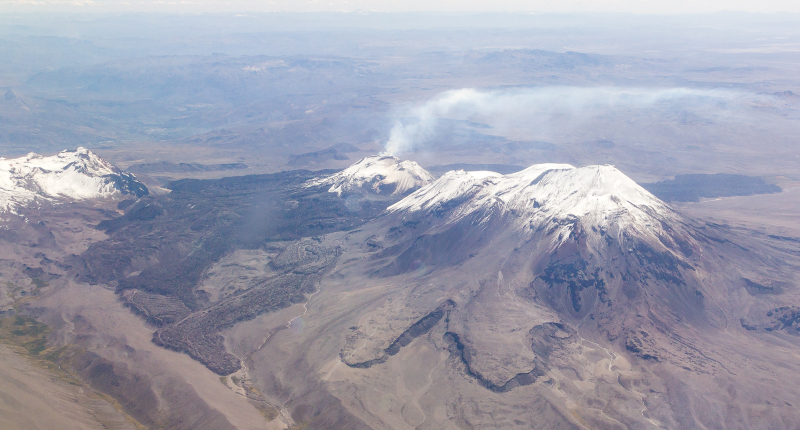
Photo source: Sunrise Sunset Times Lookup 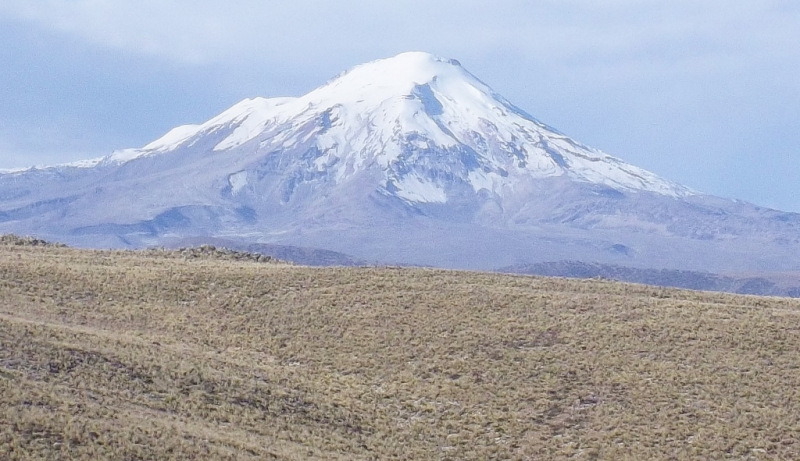
Photo source: Wikipedia -
The Cordillera Vilcabamba's highest mountain, Nevado Salkantay, holds the title of highest peak. It is situated in the Cusco department, close to the fabled Machu Picchu. Salkantay lies roughly 65 kilometers west-northwest of Cusco and less than 20 kilometers straight south of Machu Picchu. Because of its proximity to these major Inca monuments, it is considered one of the Tawantinsuyu's most sacred mountains.
Salkantay was one of the Inca Empire's most holy mountains, with the capacity to influence weather and fertility in the surrounding area. One of the most well-known mountains, as it is frequently used as a multi-day alternative to the Inca Trail. The hike is difficult, yet it attracts climbers of all skill levels. Climbers travel from Cusco and Mollepata to reach the summit. The vistas on this hike are breathtaking.
Location: the Cusco department
Elevation: 6,271 m
Range: The Cordillera Vilcabamba
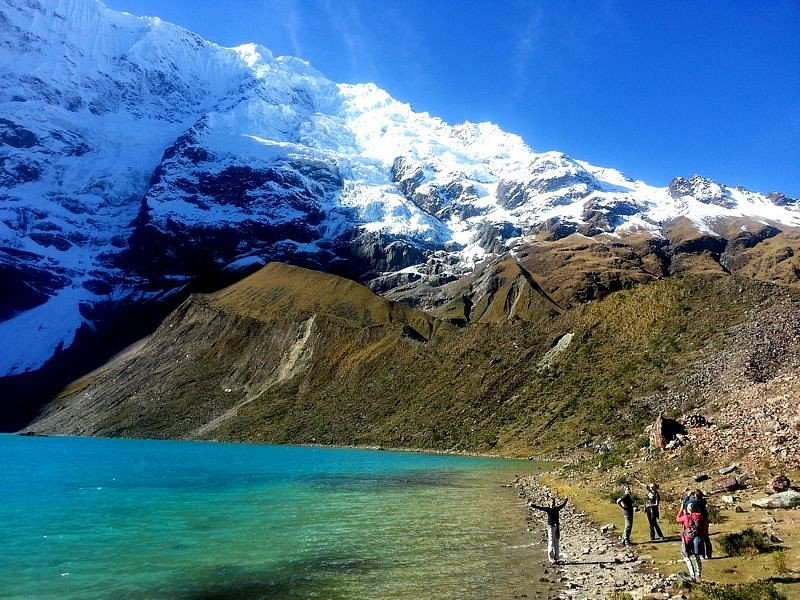
Photo source: Tripadvisor 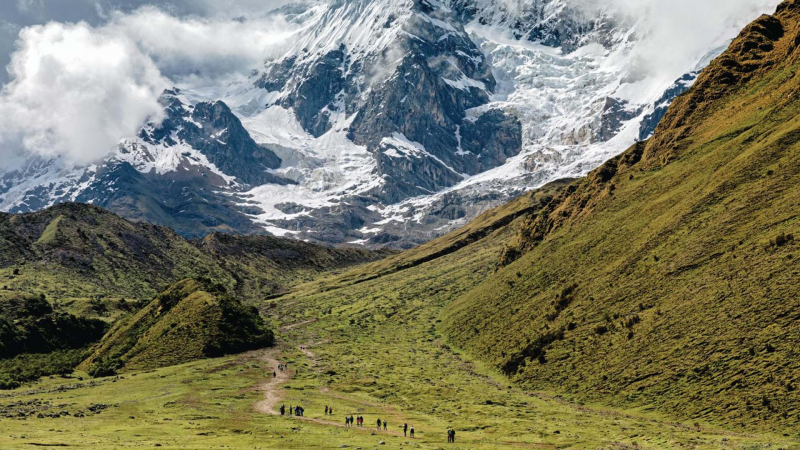
Photo source: Peru Travel













